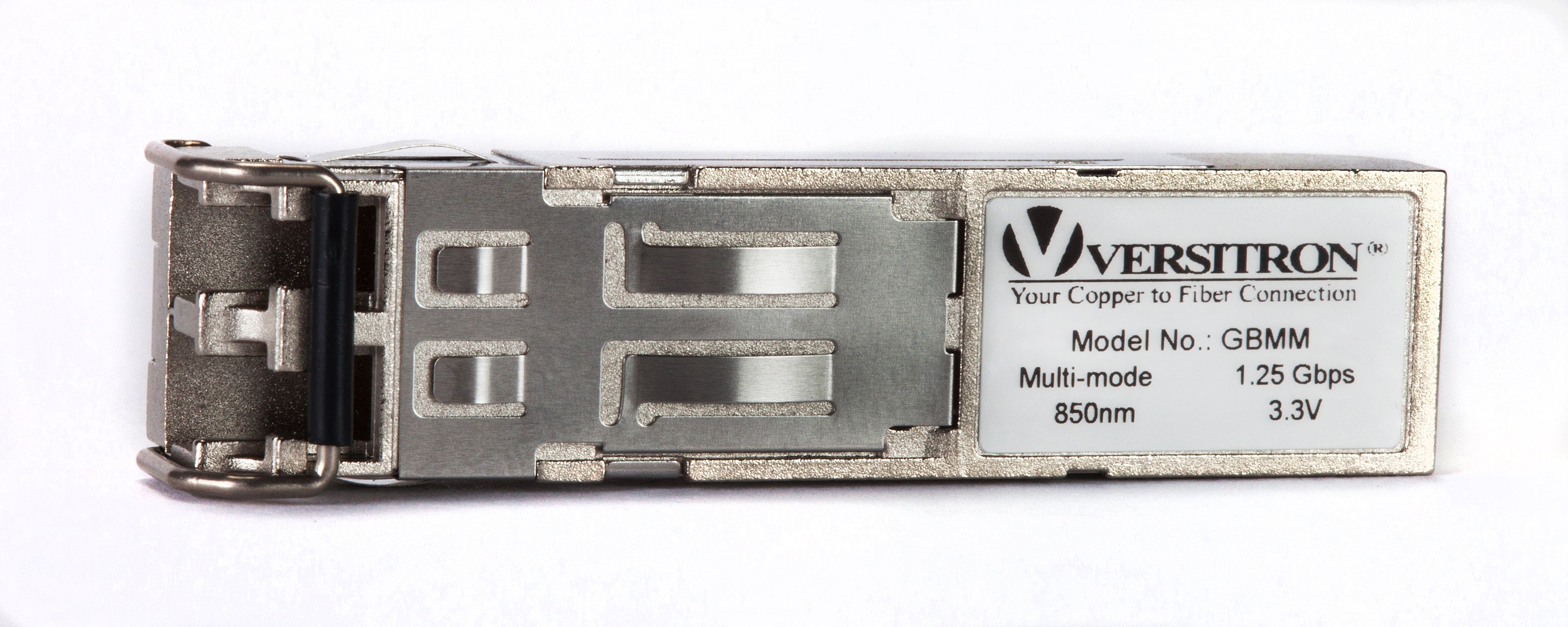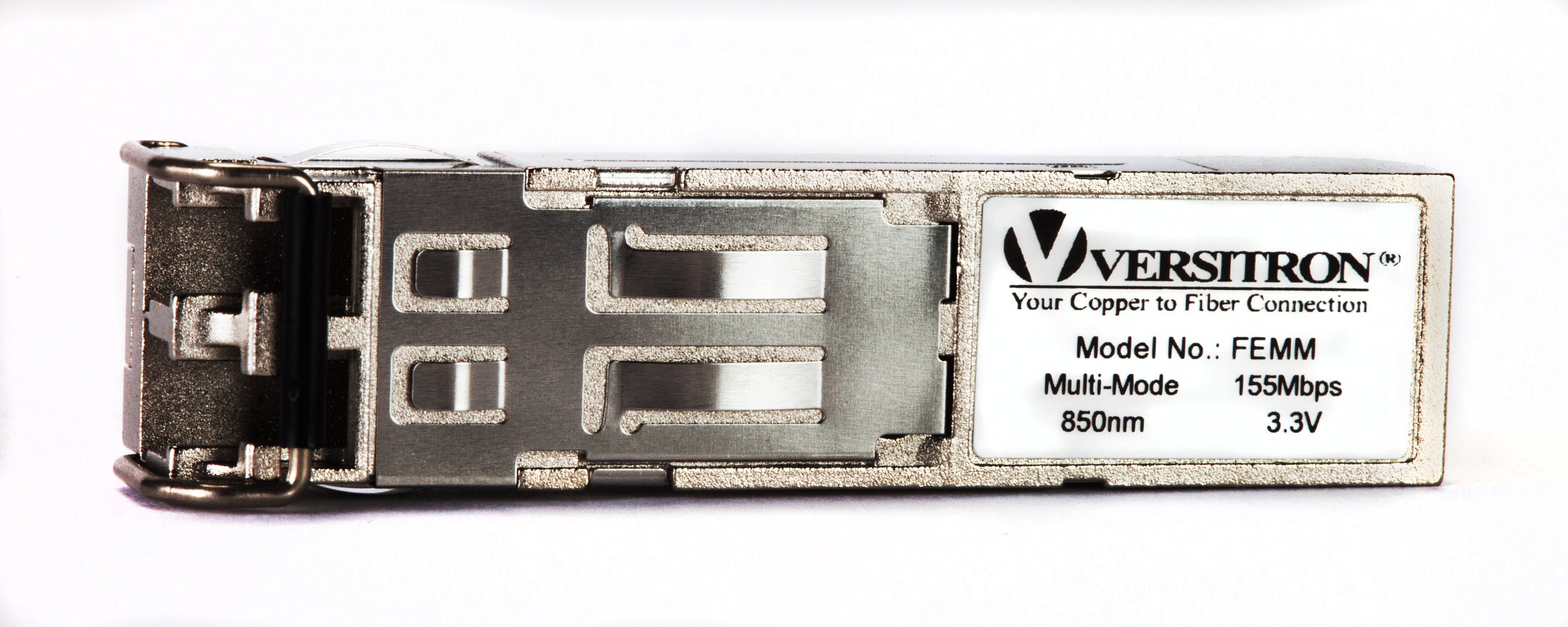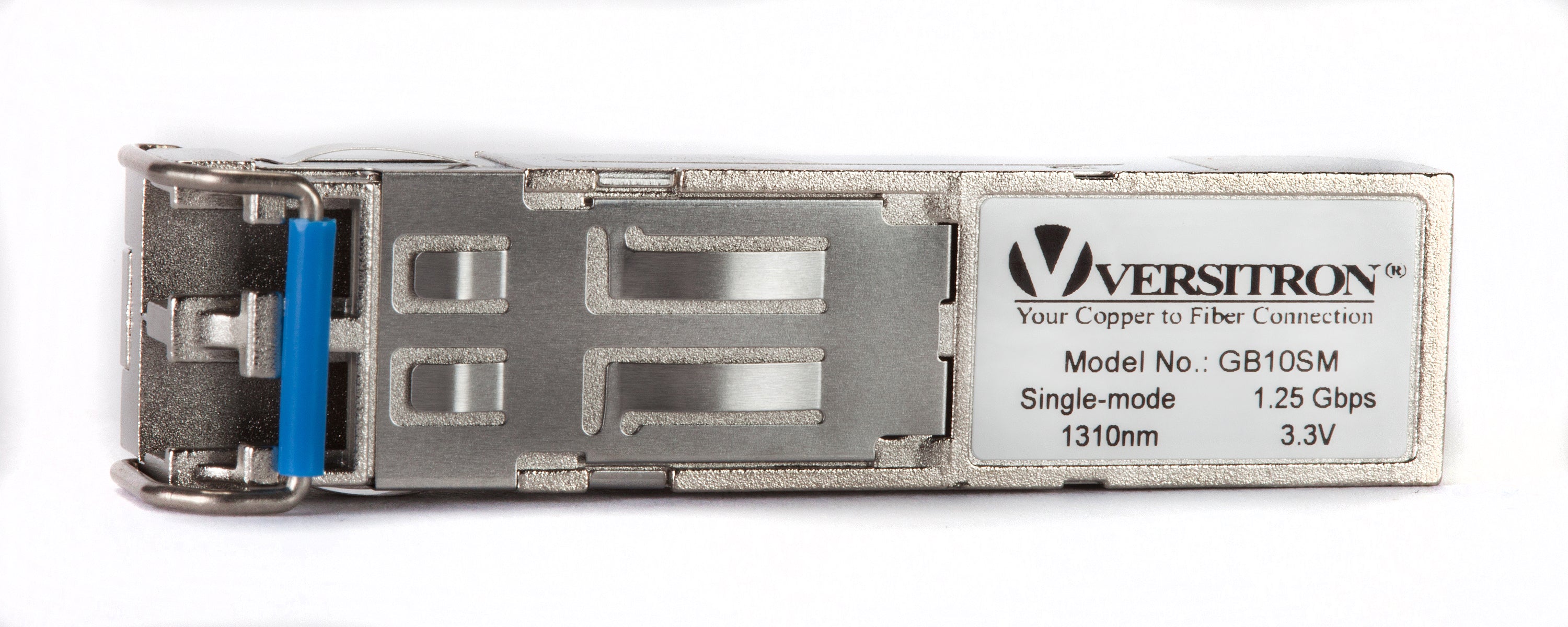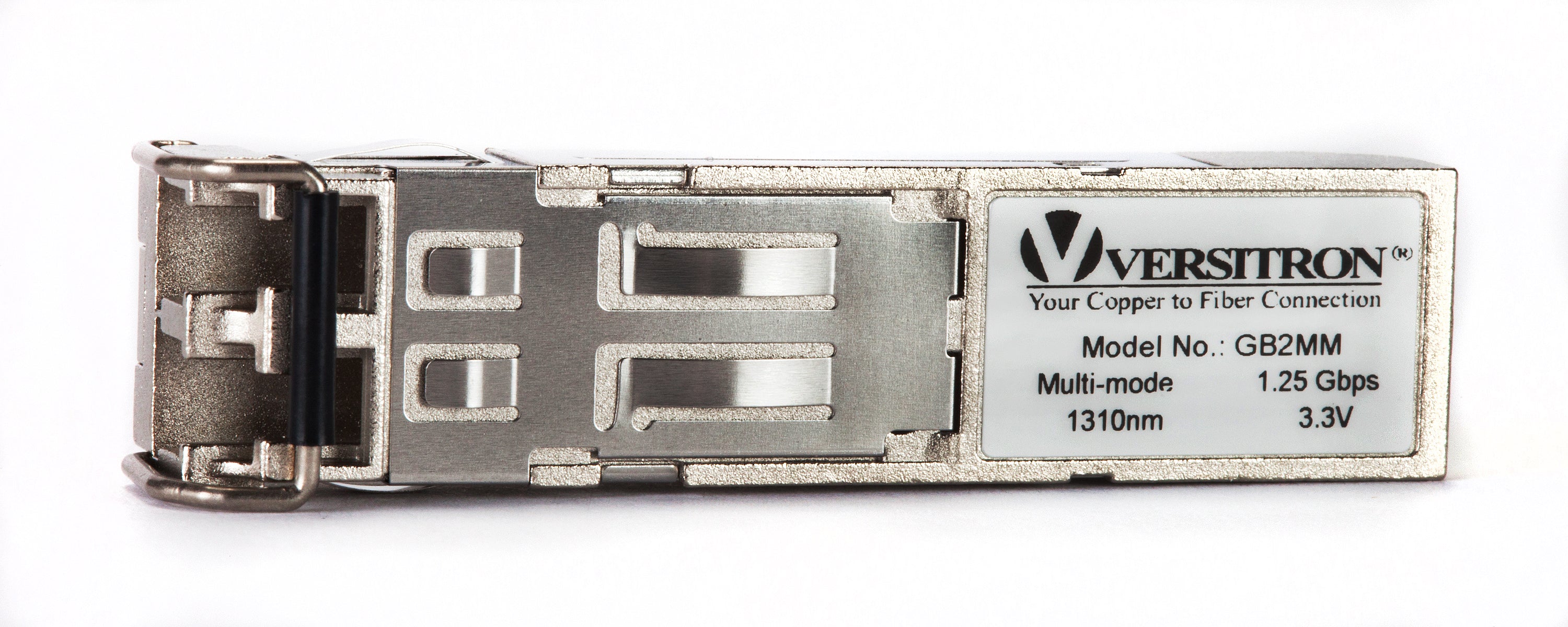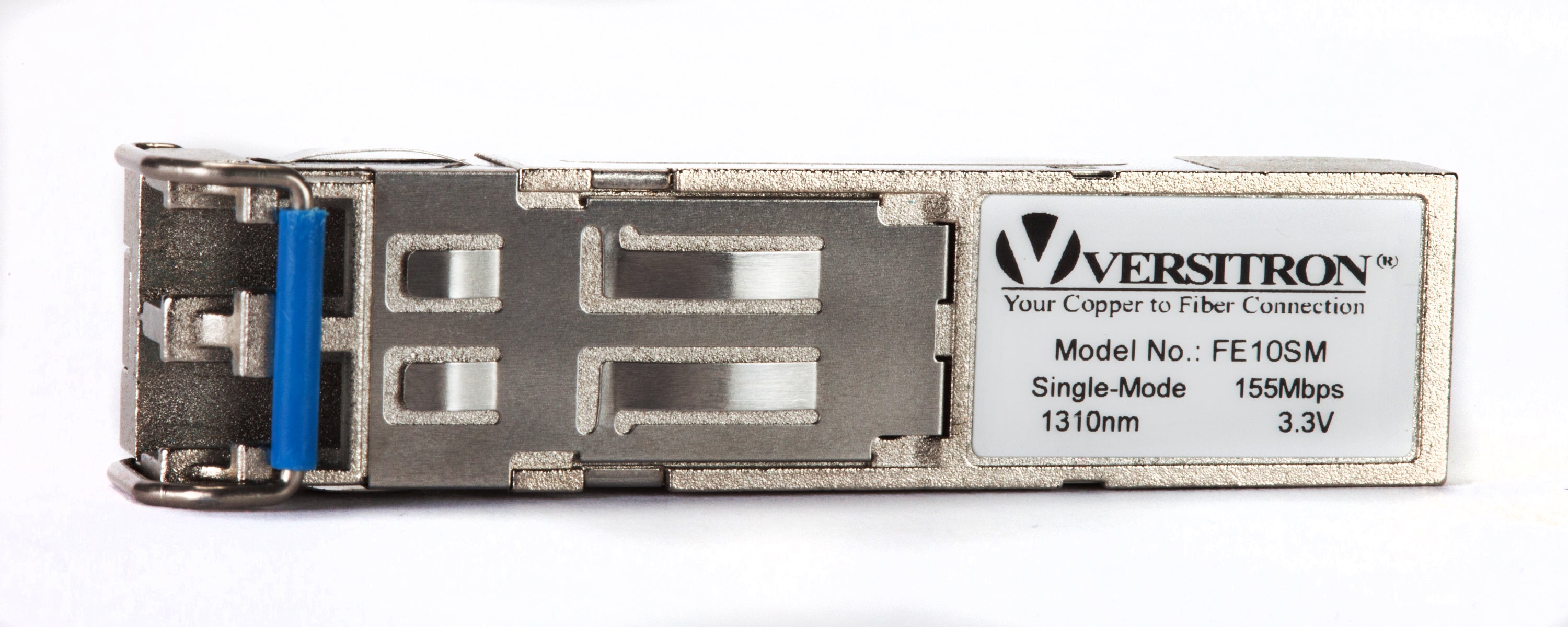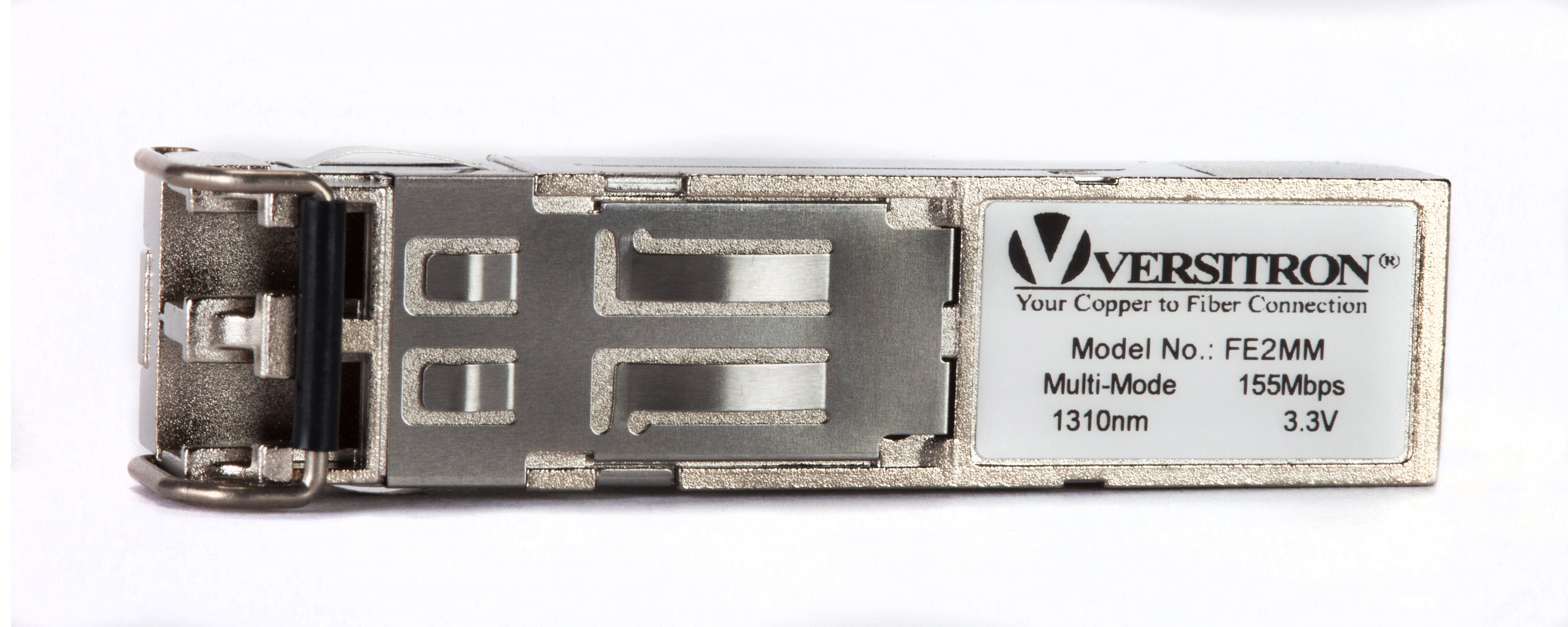Gigabit switches or gigabit Ethernet switches are used to enhance speeds and data transmission rates up to 1Gbps and beyond. It complies with IEEE 802.3z standard and is widely used in industrial networks. Over the last few years, fiber optics has picked up pace, and this market segment is estimated to grow at a decent rate over the next few years. This is primarily because of blended networks, wherein fiber optics is implemented in the existing copper cable networks. This is an effective and affordable solution to increasing speed, connectivity, transmission distance, bandwidth, and security in a network. These gigabit switches have both SFP as well as RJ45 connector ports, which enable the connectivity between copper cable and fiber networks. This post discusses the significance of an SFP port on gigabit switches and more.

SFP Ports on Gigabit Switches and Their Types
An SFP port is a slot on a network device which accepts small form-factor pluggable (SFP) transceivers. Most gigabit switches have one or two SFP ports and eight to ten RJ45 connector ports. This applies to most mid-sized networks. Based on the switch type and requirement, these number of ports can go up to 20, 30, or beyond. On a gigabit switch, there may be SFP ports, combo ports, POE ports, uplink ports, and more, and they support both single mode as well as multimode networks. SFP combo or module ports can connect to fiber optic as well as Ethernet twisted pair Cat5 cables onwards. With SFP, the transmission distance with single mode is more than multimode cables. Here are the details of some SFP ports commonly found on gigabit Ethernet switches.
- SFP Module: This is a small, hot-pluggable transceiver used for data as well as telecom applications. This fits into an SFP socket on a switch or any network device. Their data transmission rate is 1 gigabit and beyond up to even 25 Gigabit for SFP+ modules.
- SFP POE Ports:: They facilitate simultaneous power transmission alongside data transmission over a single twisted pair cable. Such switches are a type of power-sourcing equipment (PSE). Know more about SFP POE Ports here.
- SFP Uplink Ports: Most SFPs are downlink ports, which means they interface with connected devices such as computers, phones, cameras, and more. An uplink port facilitates connectivity with higher network layers to aggregate with advanced switches for high speed data transmission with rates ranging from 10Gb to 100Gb.
- Combo Ports: In this, there are paired slots of both SFP and RJ45 connectors. However, only one can be active at a time. If you activate SFP, RJ45 automatically deactivates, and vice-versa.
Benefits of SFP Ports
- Flexibility: SFP ports offer a high level of flexibility, allowing network administrators to select the appropriate transceiver type (fiber or copper) based on their networking needs.
- Scalability: With the ability to support different data rates, SFP ports facilitate network scalability and can accommodate increasing bandwidth demands without replacing the entire networking infrastructure.
- Hot-Swap ability: SFP ports can be hot-swapped without disrupting network operations, making upgrades and replacements more convenient and minimizing downtime.
- Long-distance Connectivity: Fiber optic SFP transceivers enable data transmission over long distances, making them ideal for interconnecting geographically dispersed network segments.
- Cost-Effectiveness: SFP ports enable a "pay-as-you-grow" approach, as network administrators can invest in the required number of ports and transceivers without over-provisioning.
Advancements and Current Trends in SFP Ports
If you plan to upgrade your current legacy network, blending it with fiber optics is the best possible solution in many ways. This is regardless of the network type of business size. This enhances scalability, speed, bandwidth, transmission distance, and security. It also reduces signal attenuation and offer seamless connectivity. In such a scenario, you will require good quality fiber as well as gigabit switches and other network devices. Ensure you source all the network devices from a trusted supplier, and that the switches are compatible with existing devices. VERSITRON is one of the leading manufacturers of fiber optic network devices and offers a variety of switches, media converters, fiber optic modems, and installation kits.
- Newer versions of Bidirectional SFP modules and ports have been developed, supporting high bandwidths and huge data transmission speeds of up to 400 Gbps. Much research is being done to develop even higher transmission rates and reach 800 Gbps.
- Most SFPs now facilitate bidirectional data transmission over a single fiber cable. Some may use two fibers, separate for transmission and reception each.
- As mentioned, single mode SFPs can facilitate long-distance transmissions. Most SFP modules now facilitate geographical transmission distances up to 200km, when using multiplex wavelengths.
- For combo ports, when connecting to an RJ45 connector, you need to use a twisted pair cable, and when using when connecting to an SFP port, you need to connect with a fiber optic cable. So, this port is compatible with both the types of network cables.
- If you connect both types of cables to the combo port SFP port connectivity gets default preference and the Ethernet cable connectivity is blocked.
- SFP port becomes active once SFP transceiver is connected onto the linking network device.
- The combo port typically works on Layer 2 which is the datalink layer, while SFP port works on physical layer which is layer 1.
Differences Between SFP and SFP+ Ports
SFP (Small Form-factor Pluggable) and SFP+ (Enhanced Small Form-factor Pluggable) ports are both hot-swappable interfaces used in networking equipment, but they have some key differences. Here's a point-wise comparison between SFP and SFP+ ports:
-
Data Rate: SFP ports support data rates up to 1 Gbps (Gigabit per second). They are commonly used for Fast Ethernet (100 Mbps) and Gigabit Ethernet (1 Gbps) connections.
Whereas SFP+ ports support data rates starting from 10 Gbps and can go up to 25 Gbps or more. They are designed for high-speed networking applications. -
Use Cases: SFP ports are suitable for applications where data rates up to 1 Gbps are sufficient, such as connecting switches, routers, and other networking devices in standard network environments.
Whereas SFP+ ports are ideal for data centers, enterprise networks, and other high-bandwidth environments that require 10 Gbps or higher data transfer rates. -
Cost-Effectiveness: SFP transceivers are generally less expensive than SFP+ transceivers, making them a cost-effective choice for lower-speed networking requirements.
Whereas SFP+ transceivers are generally more expensive than SFP transceivers. -
Connector Type: SFP ports use the LC (Lucent Connector) duplex connector, which is common in fiber optic cables.
Whereas SFP+ ports use the same LC duplex connector as SFP ports, ensuring compatibility with fiber optic cables using LC connectors. -
Power Consumption: SFP transceivers generally consume low power compared to SFP+ transceivers.
Whereas SFP+ transceivers generally consume more power compared to SFP transceivers, which may be a consideration in high-density network environments.
Comparison between SFP Port and RJ45 Port on a Gigabit Switch
When comparing SFP (Small Form-factor Pluggable) ports to RJ45 ports on a Gigabit switch, there are some important differences to consider:
-
Medium: SFP ports support both fiber optic and copper connections. They allow for the use of SFP transceivers, which can be easily swapped to accommodate different networking needs.
Whereas RJ45 ports on a Gigabit switch use Ethernet cables with standard copper wiring. These ports are commonly used for Ethernet connections in local area networks (LANs) and are compatible with various Ethernet standards. -
Speed and Distance: SFP ports can support different data rates, including Gigabit Ethernet (1 Gbps) and beyond, depending on the SFP transceiver used. Fiber optic SFP transceivers allow for long-distance connections, spanning several kilometers.
Whereas RJ45 ports on a Gigabit switch support data rates up to 1 Gbps. However, the effective distance is limited to around 100 meters (328 feet) for optimal performance. -
Cost-Effectiveness: SFP ports and SFP transceivers are generally more expensive compared to RJ45 ports and Ethernet cables.
Whereas RJ45 ports and Ethernet cables are generally more cost-effective compared to SFP ports and fiber optic cables. -
Latency: When connecting devices at a considerable distance, SFP ports have a lower latency compared to RJ45 ports.
Whereas when connecting device at a considerable distance RJ45 ports that maybe give a worse service.
Troubleshooting Common SFP Port Issues
Troubleshooting common SFP (Small Form-factor Pluggable) port issues can help maintain a stable and efficient network. Here are some common SFP port problems and brief troubleshooting tips to address them:
- No Link Connectivity: "No Link Connectivity" refers to the absence of a network connection between devices through an SFP port. It can be caused by issues such as loose connections, incompatible transceivers, or faulty SFPs. If there is no link on an SFP port, check the physical connections, ensure the SFP transceiver is securely inserted, and verify that the correct SFP type is used and compatible with the device.
- Low Signal or High Error Rates: "Low Signal or High Error Rates" refer to situations where the signal strength of the network connection is weak or there are frequent errors in data transmission through an SFP port. This issue can occur due to damaged fiber optic cables, incompatible or faulty SFP transceivers, or incorrect configuration settings. Replace the SFP with a known working one to rule out a faulty transceiver.
- Auto-Negotiation Failures: "Auto-Negotiation Failures" occur when the auto-negotiation process between devices connected through an SFP port fails to establish compatible speed and duplex settings. This can result in mismatched configurations and performance issues. Manually set the speed and duplex settings on both ends of the link to ensure they match.
- Duplex Mismatch: "Duplex Mismatch" refers to a configuration issue where devices connected through an SFP port have different settings for duplex mode, resulting in data transmission conflicts. If the SFP port operates in half-duplex mode while the other end operates in full-duplex, it can lead to collisions and degraded performance. Ensure both ends of the link are set to the same duplex mode.
- Faulty SFP Transceiver: A "Faulty SFP Transceiver" refers to a malfunctioning or defective SFP module used in an SFP port. This issue can result in various connectivity problems, such as intermittent link loss, high error rates, or complete network disruption. Try replacing the suspect SFP with a known working one to see if the issue persists.
- Compatibility Issues: "Compatibility Issues" refer to situations where the SFP transceiver used in an SFP port is not fully compatible with the networking equipment. This can result in connectivity problems or degraded performance. Ensure the SFP transceiver is compatible with the specific networking equipment. Some devices may require vendor-specific SFPs.
- Dirty Connectors: "Dirty Connectors" refer to the presence of dirt, dust, or contaminants on the connectors of an SFP port. These particles can interfere with the signal quality and lead to connectivity issues or degraded performance. Clean the SFP connectors with appropriate cleaning tools or lint-free wipes.
- Incorrect Wavelength or Distance: "Incorrect Wavelength or Distance" refers to a situation where the SFP transceiver used in an SFP port does not match the required wavelength or distance specifications of the fiber optic link. This can result in signal degradation, loss of connectivity, or errors in data transmission. Verify that the SFP transceiver's wavelength and distance specifications match the requirements of the fiber optic link.
- Firmware and Software Updates: "Firmware and Software Updates" involve keeping the networking equipment's firmware and software up to date with the latest versions provided by the manufacturer. These updates often include bug fixes, security enhancements, and performance optimizations. Ensure that the networking equipment's firmware and software are up to date, as updates may address known SFP-related issues.
- Environmental Factors: "Environmental Factors" refer to conditions in the surrounding environment that can impact the performance of SFP ports. Factors such as temperature, humidity, and dust levels can affect the reliability and stability of network connections. Ensure the network environment is within the specified operating conditions.
- Electromagnetic Interference (EMI): "Electromagnetic Interference (EMI)" refers to the disruption of electronic signals caused by electromagnetic radiation from nearby devices or cables. EMI can adversely impact the performance and reliability of SFP ports by introducing signal interference, leading to packet loss, data corruption, or degraded network connectivity. Ensure proper cable management and shielding to minimize EMI.
- Link Flapping: "Link Flapping" is a phenomenon in which the link status of an SFP port fluctuates rapidly between the connected devices. This can cause intermittent connectivity issues and network instability. Secure all connections and check for cable damage.
Conclusion
If you plan to upgrade your current legacy network, blending it with fiber optics is the best possible solution in many ways. This is regardless of the network type of business size. This enhances scalability, speed, bandwidth, transmission distance, and security. It also reduces signal attenuation and offer seamless connectivity. In such a scenario, you will require good quality fiber as well as gigabit switches and other network devices. Ensure you source all the network devices from a trusted supplier, and that the switches are compatible with existing devices. VERSITRON is one of the leading manufacturers of fiber optic network devices and offers a variety of switches, media converters, fiber optic modems, and installation kits.
FAQs
SFP ports enable Gigabit switches to connect to a wide variety of fiber and Ethernet cables to extend switching functionality throughout the network.
It is not possible to directly connect an SFP/ SFP+ port to an RJ45 connector using a CAT cable. To establish this connection, you need a specialized Copper RJ-45 Transceiver which can act as an adapter. The transceiver is inserted into the SFP/SFP+ port and enables you to connect a Cat6/7 cable from your server or storage device to the SFP/SFP+ transceiver via an RJ45 connector. This transceiver essentially converts the SFP/SFP+ port into an RJ45 port, allowing for a seamless connection between the two devices.
Yes, you can connect an SFP (Small Form-factor Pluggable) module to an Ethernet network, but you will need to use an appropriate transceiver or media converter to do so.
To connect an SFP module to an Ethernet network, you will need to insert the SFP transceiver module into the SFP port of a compatible device. This allows Gigabit switches to connect to both fiber and copper cables and enables the conversion of SFP to Ethernet or Ethernet to SFP. Once connected, the SFP and Ethernet ports work together to complete the switching function, facilitating seamless communication between the network devices.
A combo port is a device that supports both fiber optic as well as Ethernet cable connectors. So it has RJ45 as well as SFP port connectors. However, only one can be activated at a time. So, it is a single network interface with two connection options, wherein only one can be operational at a time. This is because they have the same port number and VLANs. On the other hand, SFP or small form factor pluggable ports and their advanced versions such as SFP+ and SFP++ are used only for fiber optic connectivity. SFP ports have a variety of connectors such as LC, SC, and more. Here are some distinguishing factors between SFP port modules and combo ports.






